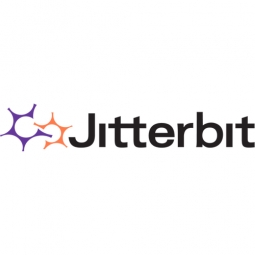下载PDF
Quiet Logistics Case Study
技术
- 应用基础设施与中间件 - API 集成与管理
- 应用基础设施与中间件 - 数据交换与集成
适用行业
- 零售
- 电子商务
适用功能
- 物流运输
- 仓库和库存管理
用例
- 供应链可见性(SCV)
- 库存管理
服务
- 系统集成
- 软件设计与工程服务
挑战
Quiet Logistics 是一家从订单到消费者 (F2C) 的供应商,需要一种解决方案来将各种电子零售商客户系统与其自己的订单管理系统 (FMS) 集成,而无需改变内部或外部业务流程。每个客户都有独特的系统和流程,因此自定义代码是一种不可扩展且难以管理的选项。该公司需要一个简单但功能强大的集成平台来标准化这些流程。挑战在于让新的电子零售商拥有独特的系统和业务流程,而无需进行自定义集成。系统的维护也需要简单。
关于客户
Quiet Logistics 是第一家利用 Kiva Systems 颠覆性物料搬运机器人技术为电子商务行业增长最快的一些电子零售商提供完整外包解决方案的 Fulfillment to Consumer (F2C) 供应商。该公司的 Consumer Driven Fulfillment (CDF) 服务专为满足当今在线消费者、品牌和电子零售商日益增长的期望而开发。与 Consumer Driven Fulfillment 相关的服务水平需要先进的技术和机器人技术。Quiet Logistics 开发了一个独特的操作平台,允许多个客户(或租户)利用通用的机器人基础设施。
解决方案
Quiet Logistics 选择 Jitterbit 是因为其特性和功能提供了一个平台来标准化客户端集成。图形界面使新电子零售商的入职变得简单且完全无缝。Jitterbit 用于通过 Web 服务将拣货和包装流程与客户应用程序集成,让电子零售商可以全面了解订单。此外,Quiet Logistics 使用 Jitterbit 构建 EDI 消息,并将其传输给电子零售商的客户。Jitterbit 为 Quiet Logistics 敏捷、透明和以客户为导向的仓库管理服务提供了支撑。该解决方案涉及通过 Web 服务消息传递近乎实时地同步 Quiet FMS 与不同的客户端应用程序。Jitterbit 用于将订单转换为 EDI 消息并发送给电子零售商的客户。
运营影响
数量效益
相关案例.

Case Study
Improving Production Line Efficiency with Ethernet Micro RTU Controller
Moxa was asked to provide a connectivity solution for one of the world's leading cosmetics companies. This multinational corporation, with retail presence in 130 countries, 23 global braches, and over 66,000 employees, sought to improve the efficiency of their production process by migrating from manual monitoring to an automatic productivity monitoring system. The production line was being monitored by ABB Real-TPI, a factory information system that offers data collection and analysis to improve plant efficiency. Due to software limitations, the customer needed an OPC server and a corresponding I/O solution to collect data from additional sensor devices for the Real-TPI system. The goal is to enable the factory information system to more thoroughly collect data from every corner of the production line. This will improve its ability to measure Overall Equipment Effectiveness (OEE) and translate into increased production efficiencies. System Requirements • Instant status updates while still consuming minimal bandwidth to relieve strain on limited factory networks • Interoperable with ABB Real-TPI • Small form factor appropriate for deployment where space is scarce • Remote software management and configuration to simplify operations

Case Study
How Sirqul’s IoT Platform is Crafting Carrefour’s New In-Store Experiences
Carrefour Taiwan’s goal is to be completely digital by end of 2018. Out-dated manual methods for analysis and assumptions limited Carrefour’s ability to change the customer experience and were void of real-time decision-making capabilities. Rather than relying solely on sales data, assumptions, and disparate systems, Carrefour Taiwan’s CEO led an initiative to find a connected IoT solution that could give the team the ability to make real-time changes and more informed decisions. Prior to implementing, Carrefour struggled to address their conversion rates and did not have the proper insights into the customer decision-making process nor how to make an immediate impact without losing customer confidence.

Case Study
Digital Retail Security Solutions
Sennco wanted to help its retail customers increase sales and profits by developing an innovative alarm system as opposed to conventional connected alarms that are permanently tethered to display products. These traditional security systems were cumbersome and intrusive to the customer shopping experience. Additionally, they provided no useful data or analytics.

Case Study
Ensures Cold Milk in Your Supermarket
As of 2014, AK-Centralen has over 1,500 Danish supermarkets equipped, and utilizes 16 operators, and is open 24 hours a day, 365 days a year. AK-Centralen needed the ability to monitor the cooling alarms from around the country, 24 hours a day, 365 days a year. Each and every time the door to a milk cooler or a freezer does not close properly, an alarm goes off on a computer screen in a control building in southwestern Odense. This type of alarm will go off approximately 140,000 times per year, equating to roughly 400 alarms in a 24-hour period. Should an alarm go off, then there is only a limited amount of time to act before dairy products or frozen pizza must be disposed of, and this type of waste can quickly start to cost a supermarket a great deal of money.

Case Study
Supermarket Energy Savings
The client had previously deployed a one-meter-per-store monitoring program. Given the manner in which energy consumption changes with external temperature, hour of the day, day of week and month of year, a single meter solution lacked the ability to detect the difference between a true problem and a changing store environment. Most importantly, a single meter solution could never identify root cause of energy consumption changes. This approach never reduced the number of truck-rolls or man-hours required to find and resolve issues.






